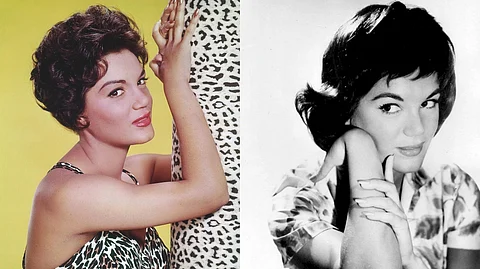
- NEWS
- the EDIT
- COMMENTARY
- BUSINESS
- LIFE
- SHOW
- ACTION
- GLOBAL GOALS
- SNAPS
- DYARYO TIRADA
- MORE

She sang of heartaches and hope, of love gained and lost —and for millions across the globe, Connie Francis gave a voice to emotions they couldn’t quite express.
On 16 July, the world lost one of its most enduring musical icons. She was 87.
The heartbreaking news was confirmed by her longtime friend Ron Roberts, who wrote, “It is with a heavy heart and extreme sadness that I inform you of the passing of my dear friend Connie Francis last night. I know that Connie would approve that her fans are among the first to learn of this sad news.”
Born Concetta Rosa Maria Franconero on 12 December 1937, in Newark, New Jersey, Connie Francis was more than just a pop star. She was a trailblazer, a survivor, and one of the most influential female vocalists of the 20th century. Her voice — crystal-clear, full of warmth and soul — became the comforting soundtrack to the lives of postwar listeners across the world.
By the time she reached her early 20s, Connie already achieved what many artists spend a lifetime chasing. In 1960, she became the first woman to top the Billboard Hot 100 with the hit “Everybody’s Somebody’s Fool.” It was one of 53 charting singles she would release throughout her career — three of which would reach No. 1. In a time when male crooners and rock ’n’ roll rebels dominated the airwaves, Connie stood tall, breaking barriers for female artists on and off the stage.
Her success wasn’t confined to the United States. Francis became a global phenomenon, recording songs in Italian, Spanish, German, Hebrew and Yiddish, among many others. She was adored in Europe and Asia, and was named the most successful female artist in Germany, Japan, the UK, Italy and Australia by the early 1960s. Her ability to transcend language and culture through music was a rare gift — and one she carried with pride.
But behind the glamorous gowns and golden records was a woman whose life was not without struggle. She faced personal trauma, industry exploitation and heartbreaking loss. And yet, she never stopped singing. Music was her strength and sanctuary. As she shared in her 1984 autobiography “Who’s Sorry Now?,” Francis endured because of her passion — and the unwavering belief that music could heal, not just others, but herself.
Throughout her decades-long career, Francis maintained an unparalleled level of creative control, a privilege almost unheard of for a woman in the recording industry at the time.
“I could record where I wanted, however many songs I wanted, in whatever country, in whatever language, with whatever arranger… and if I didn’t like any of it, I didn’t have to release it,” she once said.
That confidence and independence became her legacy — not just in the music she left behind, but in the example she set for generations of artists to come.
Her classics like “My Heart Has a Mind of Its Own,” “Don’t Break the Heart That Loves You,” and “Stupid Cupid” remain timeless, a testament to her ability to blend emotion with melody in a way that felt both personal and universal.
More than a chart-topper, Connie was the beating heart of a musical era. She reminded people that it was okay to cry, to remember, to long — and to hope again. And while she is no longer with us, her songs continue to echo through the decades, playing in jukeboxes, film soundtracks and cherished memories.
In the end, Connie gave the world a gift far greater than fame. She gave us her voice — and through it, a piece of herself.
Rest easy, Connie. The world will keep singing.
